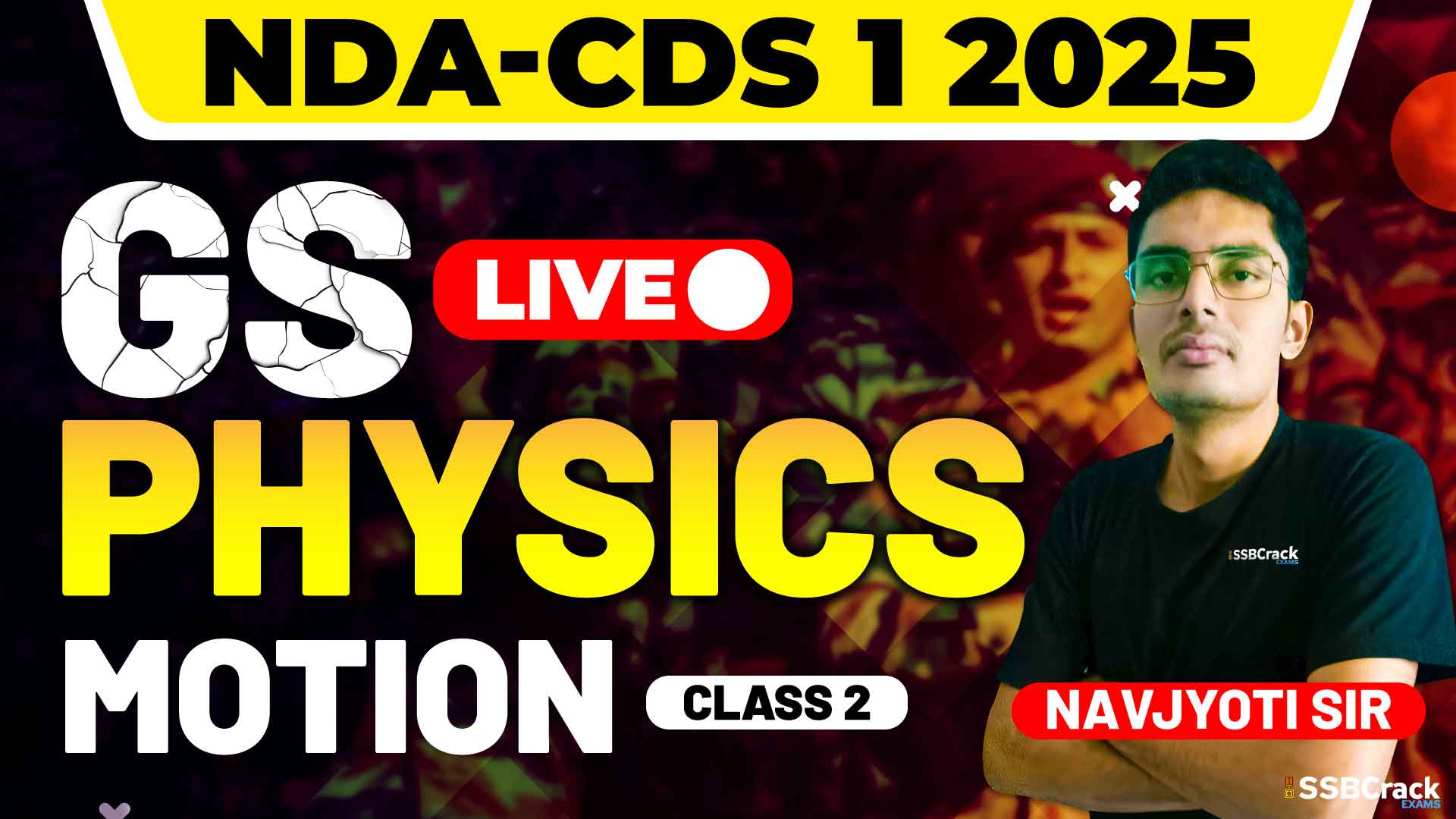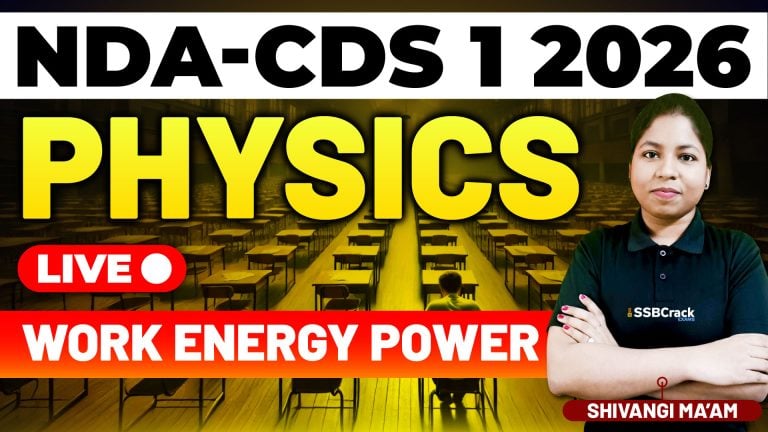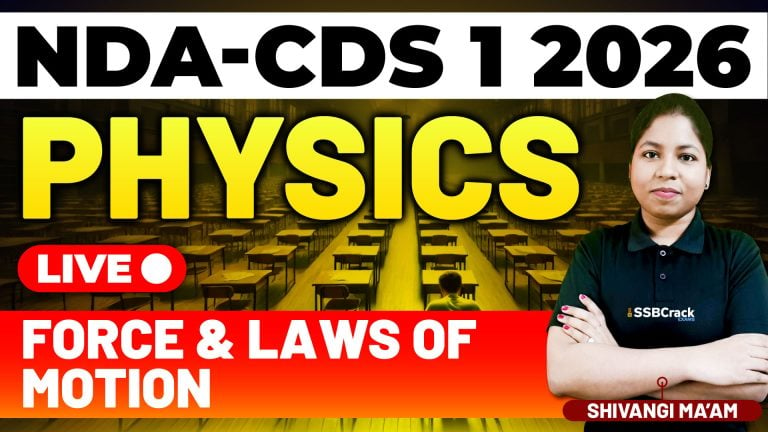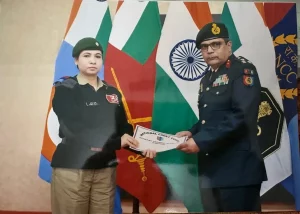Physics is a crucial component of competitive exams like the National Defence Academy and Naval Academy (NDA-NA) Exam – Paper II (GAT) and the Combined Defence Services (CDS) Exam. Among the fundamental topics in Physics, Motion plays a significant role, not just as a standalone concept but also as a foundation for more advanced topics. A recent class dedicated to Motion delved into its core subtopics, offering an in-depth understanding and preparing students for questions that commonly appear in these exams.
Overview of the Class
The session focused on key concepts related to motion, covering both theoretical discussions and practical problem-solving approaches. Here’s a breakdown of the topics discussed during the class:
1. Scalars and Vectors
- Scalars were introduced as quantities defined by magnitude alone, such as distance and speed.
- Vectors were explained as quantities requiring both magnitude and direction, such as displacement, velocity, and acceleration.
- The difference between scalars and vectors was emphasized with real-life examples.
2. Vector Operations
- Vector Addition: The Parallelogram Law of vector addition was discussed to explain how two vectors combine to form a resultant vector.
- Vector Multiplication: Both scalar and vector products were introduced, with a focus on their physical significance in understanding force, work, and torque.
- Resolution of Vectors: Breaking vectors into their components was explored, which helps simplify problems involving multiple forces or motions.
3. Motion Terminology
- Essential terms such as distance, displacement, speed, velocity, and acceleration were thoroughly explained with their distinctions and real-world implications.
- Concepts like average speed, uniform motion, and non-uniform motion were discussed in relation to common scenarios.
4. Graphical Representation of Motion
- Displacement-Time Graphs: Interpreting slopes and shapes of graphs to understand motion patterns.
- Velocity-Time Graphs: Insights into acceleration, deceleration, and areas under the graph for calculating displacement.
5. Types of Motion
- Projectile Motion: The curved path followed by an object under gravity was explained, with examples like throwing a ball or a missile’s trajectory. Key aspects such as range, maximum height, and time of flight were highlighted.
- Uniform Circular Motion: The motion of an object in a circle at constant speed was discussed, with emphasis on concepts like centripetal force and angular velocity.
Highlights of the Class
- Interactive Discussions
The session encouraged student participation, with practical examples of motion in everyday life to make abstract concepts relatable. - Problem-Solving Approach
Real-world problems, like understanding the motion of vehicles or objects in sports, were solved step-by-step to build analytical skills. - Visualization of Concepts
Graphs and diagrams were extensively used to clarify complex ideas, such as projectile motion and vector resolution. - Exam-Focused Insights
The class emphasized patterns in previous exam questions, highlighting commonly tested subtopics and potential tricky areas.
Strategies to Master the Topic
Understanding and mastering the topic of Motion requires a blend of conceptual clarity, consistent practice, and strategic preparation. Here are some tips to help:
1. Strengthen Basics
- Focus on understanding fundamental differences, such as between distance and displacement or speed and velocity.
- Relate concepts to real-life situations for better retention.
2. Practice Vector Problems
- Get comfortable with vector addition, resolution, and multiplication. These concepts often form the backbone of many physics problems in competitive exams.
- Use graphical methods to visualize vectors for better clarity.
3. Master Graphical Analysis
- Practice interpreting and drawing displacement-time and velocity-time graphs.
- Understand how slopes and areas under graphs relate to motion parameters like velocity and displacement.
4. Focus on Projectile and Circular Motion
- Break down projectile motion into horizontal and vertical components for easier understanding.
- Relate circular motion to everyday examples, such as a satellite orbiting the Earth or a car moving around a curve.
5. Solve Previous Years’ Papers
- Practice MCQs from previous exams to familiarize yourself with question patterns and difficulty levels.
- Review incorrect answers to identify weak areas and improve.
6. Create Concept Maps
- Summarize key points in a concept map, such as the relationship between velocity, acceleration, and displacement.
- Include diagrams or flowcharts for projectile and circular motion to simplify revisions.
7. Take Practice Tests
- Regularly attempt mock tests to build speed and accuracy.
- Time yourself to simulate exam conditions and improve time management skills.
Conclusion
The recent class on Motion provided students with a strong foundation to tackle questions from this topic in the NDA-NA and CDS exams. By focusing on both conceptual clarity and problem-solving strategies, the session equipped students with the tools needed to approach questions confidently.
Motion is not just a core topic in physics but also a bridge to understanding more advanced concepts. With consistent practice, attention to detail, and strategic preparation, mastering Motion can significantly enhance your performance in competitive exams. Remember, success in these exams comes from a combination of understanding, application, and perseverance. Let your preparation be as steady and determined as the principles of motion itself!


















